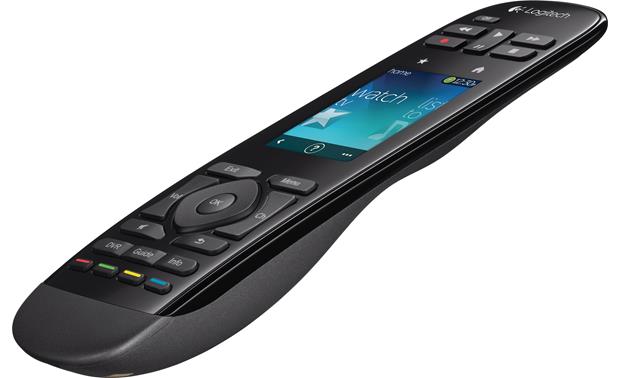

- #FLIRC HARMONY TOUCH FULL#
- #FLIRC HARMONY TOUCH CODE#
- #FLIRC HARMONY TOUCH PLUS#
- #FLIRC HARMONY TOUCH WINDOWS#
so Im posting here in hopes that it helps others (the other posts I could find on this are rather old), as well as to see if I just missed something obvious. Once done, the Chromebox only wakes on that specific IR command, and nothing else. May 2nd 2021 1 So, I finally got all of this working, but seems like I had to jump through several hoops for what I assume would be somewhat default behavior everyone should want.
#FLIRC HARMONY TOUCH CODE#
I then trained the Flirc by mapping that IR code to "Wake" in the Kodi controller. I eventually solved this by taking an old IR remote I had from a device I no longer had installed, and creating a new Harmony button I named "Resume" and learning that old remote IR command, and set up the Harmony Flirc/Kodi device with that same code to Power On.

#FLIRC HARMONY TOUCH FULL#
So even though there's a Flirc "Wake" event (on the Kodi or Full keyboard controller profiles), I had no corresponding Harmony function/button to map to it. However, there are "Power On" or "Resume" events in the Harmony Flirc/Kodi profile (Just PowerOff). And interestingly the ability to toggle that in the Flirc Advanced menu remained grayed out (not sure why).
#FLIRC HARMONY TOUCH WINDOWS#
When I installed the Flirc GUI on a Windows box to program it, it upgraded the firmware on my Flirc, after which it no longer responded to any generic IR event it saw to wake up the Chromebox. so I'm posting here in hopes that it helps others (the other posts I could find on this are rather old), as well as to see if I just missed something obvious.įirstly, just plugging the Flirc in to my Chromebox running LibreElec, and setting it up as a Flirc/Kodi device in MyHarmony initially worked pretty seamlessly for control functions, however there were two issues: 1) Any IR command would resume the Chromebox if suspended, and 2) the PowerOff functionality brought up the Kodi power menu, wherein you had to navigate to a selection. The point isn't that Media Center is slow to respond, it's the slowness of the Harmony remote in actually sending the command (as indicated by the delayed illumination of the LED at the top of the remote after repeated button presses).So, I finally got all of this working, but seems like I had to jump through several hoops for what I assume would be somewhat default behavior everyone should want. You said "And the device will respond after the first repeat anyway" - but that misses the point. Try adjusting JUST your repeat value and you will see the difference. With repeats set to 2 or 3, scrolling continues for a not-insubstantial period of time after the key is released, and the LED at the top of the Harmony remote makes it clear that it is still blasting signals after the key is released. With the repeats set to 0 and the interkey delay turned down as far as possible, guide scrolling works as expected (smooth scrolling and the scrolling stops when you release the key). You will notice it most when you press and hold the up or down arrow keys when scrolling the guide. With respect to Media Center, using the Microsoft IR receiver, changing the repeats helps considerably.
#FLIRC HARMONY TOUCH PLUS#
To live with Harmony slowness, you have to change YOUR behavior, i.e., guide surfing rather than channel surfing, number plus skip (or sequences) versus multiple presses of skip, you get the idea. But even the lowest setting can't overcome the normal slowness of a Harmony. The profile uses Kodi’s keyboard controls.

In Flirc’s firmware is a built in Kodi profile that can be used with a Logitech Harmony remote immediately. Interkey delay is the main thing you need to change. Flirc receives infrared commands and converts them to keypresses by emulating human interface devices, such as keyboards and game controllers. It may appear that things speed up with the correct number of repeats since things generally just work smoother and more reliably. It's not really helpful for speeding things up. Changing repeats is needed only when a device is missing or doubling commands. And the device will respond after the first repeat anyway. The duration of 2 or 3 repeats is only a few milliseconds. Most devices expect at least 2 to get a complete signal. Mdavej wrote:Changing repeats is not a panacea.


 0 kommentar(er)
0 kommentar(er)
